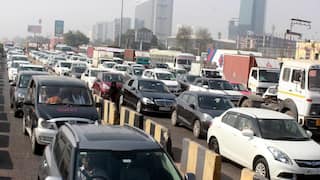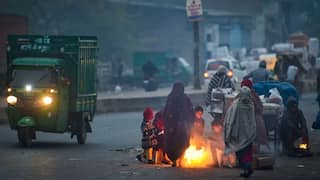Nasscom Raises Concern, Says Electrification Targets For EVs Unrealistic In Delhi
Nasscom on Wednesday mentioned that only 0.16 per cent of the total vehicles in use in national capital Delhi are currently electric vehicles (EVs).

National Association of Software and Service Companies (Nasscom) on Wednesday mentioned that only 0.16 per cent of the total vehicles in use in national capital Delhi are currently electric vehicles (EVs) and raised concerns about the unrealistic electrification targets for EVs in the city, citing supply constraints and other reasons. The industry body also pointed out inadequate charging infrastructure, high entry costs and challenges ahead for cab drivers. It made the observations on the Motor Vehicle Aggregator and Delivery Service Provider Scheme by the Delhi government, the media has reported.
The Delhi government's scheme will cut pollution and create new employment and economic growth opportunities, as per Delhi CM Arvind Kejriwal. It will also regulate bike taxis. A draft approved by the CM has been sent to the L-G for approval.
Also read: OnePlus Nord 3, Nord CE 3 Launching In India Today: How To Watch, Expected Specs, More
According to the industry body, the current share of EVs in Delhi is a mere 0.74 per cent, 30.3 per cent, and 0.16 per cent for two, three, and four-wheeler vehicles, respectively.
"Even for the EVs that are available for commercial use, the range offered is not viable for ridesharing as there is a need for a 100 km plus range to be economically viable," the Nasscom note mentioned.
In addition, charging infrastructure is inadequate, as many charging stations set up in NCT do not work properly and are too crowded during peak travel hours, it said. Also, they are not available in all areas, which requires drivers to take long detours to charge their vehicles.
The cost of acquiring EVs is also considerably higher compared to Internal Combustion Engine (ICE) counterparts as the industry data suggest that for goods and passenger mobility vehicles, two-wheeler EV models are about 25 percent more expensive, three-wheeler EV models are about 40 percent more expensive and four-wheeler EV models are about 60 percent more expensive than their ICE counterparts, says a report by news agency PTI.
Nasscom's note also mentions the case of bike taxis in Delhi, which are currently banned by the state government. As per the proposed aggregator guidelines, the transition from ICE motorbikes to two-wheeler EVs is immediate with aggregators needing to onboard 100 percent EVs from the date of notification.
Nasscom emphasised the need to relook at these targets, given that only 0.74 percent of all two-wheelers in Delhi are EVs today. Moreover, it said, most 2-wheeler EVs available are scooters and not motorcycles, which are the preferred form factor for bike taxi operators.
To recall, global ride-sharing platform Uber announced in May a range of partnerships and teamed up with EV makers to accelerate the transition to sustainable mobility in the country. The company announced the launch of all-electric Uber Green in Delhi, Mumbai and Bengaluru, starting in June.
Uber also said it is also joining hands with tech-enabled startup Zypp Electric to deploy 10,000 electric two-wheelers by 2024 to boost sustainable mobility in its Uber Moto category. Over 1000 Zypp Electric two-wheelers are already deployed on Uber Moto in the national capital.
Subscribe And Follow ABP Live On Telegram: https://t.me/officialabplive
Related Video
Apple creates a new record in iPhone sales after launch of iPhone 16 | ABP Paisa Live





































